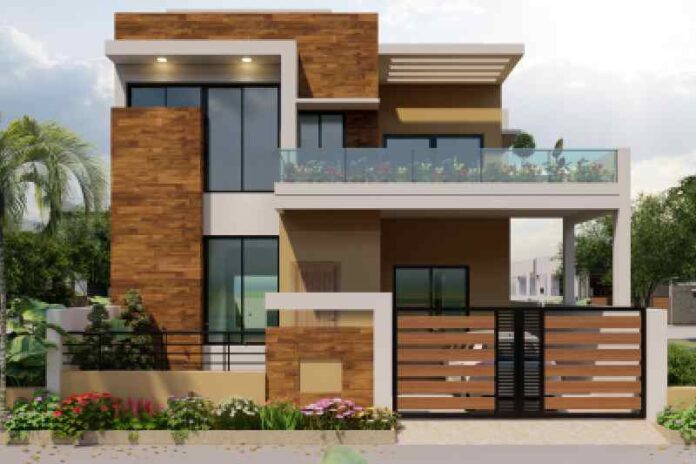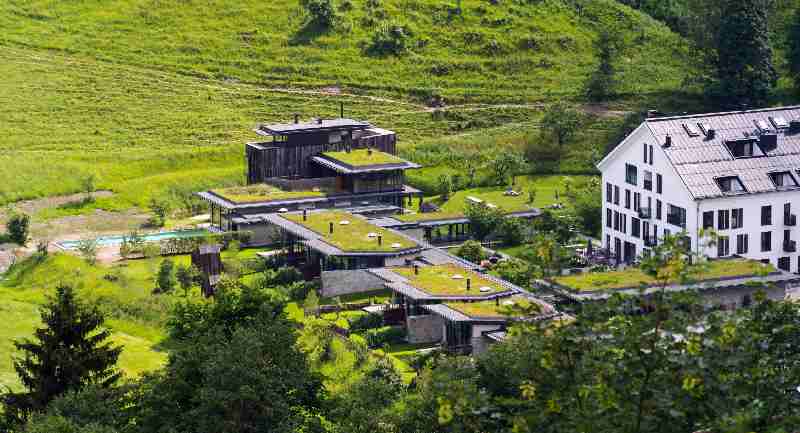
Welcome to the world of villas, where luxury meets tranquillity, and opulence intertwines with comfort. The villa concept has evolved in this modern era, yet it still embodies the essence of upscale living.
This article explores their historical significance, unique features making them famous, and diverse types.
What is a Villa?
A villa is a large, lavish residence in a scenic or desirable location. It surpasses the notion of a conventional house through its architectural uniqueness, spaciousness, and great amenities. Historically, villas were associated with the upper echelons of society and were used as retreats or summer homes.
Historical Significance of a Villa
The roots of the villa trace back to ancient Roman times. There were opulent country houses owned by the wealthy. These estates served as escape havens from bustling city life, allowing the elite to indulge in leisure and solitude.
Types of Villa
Villas are spacious, luxurious, standalone houses offering high comfort, privacy, and various amenities. Here are some common types:
Beachfront Villas
Beachfront villas provide a relaxing and luxurious coastal living experience. These villas feature large windows and outdoor spaces like terraces, decks, and private pools, allowing residents to enjoy the natural beauty of the sea.
Hillside Villas

Golf Course Villas
Golf course villas are located within or adjacent to golf courses. These villas are ideal for golf enthusiasts who want easy access to the greens and enjoy a lifestyle centred around the sport. They offer views of the golf course and amenities like private putting greens, golf cart storage, and golf-themed decor.
Waterfront Villas
Waterfront villas are situated near lakes, rivers, or other bodies of water. These properties provide stunning water views and often offer opportunities for water-based activities like boating, fishing, and swimming. Waterfront villas often come with private docks or piers for easy access to the water.
Countryside Villas
Countryside villas are located in rural or semi-rural areas, surrounded by nature and offering a peaceful environment. These villas are perfect for those who seek privacy and a connection with nature. They have extensive gardens, orchards, and outdoor recreational spaces.
Historical Villas
Historical villas are often heritage properties that have been restored or maintained to preserve their architectural and cultural significance. These villas feature intricate designs, vintage furniture, and traditional decor.
Contemporary Villas
Contemporary villas feature modern architecture, sleek lines, and cutting-edge design elements. They often incorporate large glass windows, open spaces, and minimalist aesthetics. These villas are known for their innovative use of materials and technology to create a chic living environment.
Island Villas
Island villas are on private islands or within island resorts. They offer exclusivity, seclusion, and a tropical paradise experience. Island villas have secluded beaches, lush gardens, and luxury amenities.
Resort Villas
Resort villas are part of luxury resort complexes, giving residents access to resort facilities like spas, restaurants, pools, and entertainment options. These villas combine the comfort of a private home with the convenience of resort services.
Ranch Villas
Ranch villas are usually located on expansive rural properties designed for those who enjoy a ranching or equestrian lifestyle. These properties might feature stables, riding arenas, and vast open spaces for livestock.
Villa Features
Modern villas exhibit various captivating characteristics that distinguish them from regular homes. Here are the standard features which make them famous.
1. Architecture and Design
Villas boast architectural brilliance that often combines contemporary aesthetics with timeless elegance. Spacious rooms, high ceilings, and intricate detailing contribute to their undeniable charm.
2. Space and Privacy
One of the defining traits of a villa is the abundance of space it offers. Expansive gardens, private swimming pools, and large outdoor areas provide unparalleled privacy and tranquillity.
3. Luxury and Amenities
Villas spare no expense in providing luxury amenities. From spa rooms and home theaters to gourmet kitchens and breathtaking views, the emphasis on luxury is evident.
Conclusion
In real estate, a villa represents a harmonious blend of luxurious living and sound investment. From their historical significance to modern-day allure, villas remain coveted havens that enrich lives and create lasting memories.
Frequently Asked Questions(FAQs)
Are villas only meant for the wealthy?
Not necessarily. While historically associated with the affluent, today’s real estate market offers a range of villas catering to various budget ranges.
Can I use a villa as a vacation rental throughout the year?
Yes, many villa owners opt to rent out their properties when they are not using them, generating income during peak travel seasons.
What sets a villa apart from a regular house?
Villas stand out due to their grandeur, spaciousness, luxurious amenities, and often picturesque locations.
Are villas a good investment in terms of resale value?
Generally, yes. Villas appreciate value over time due to their exclusivity and unique features, especially those in prime locations.
How do I ensure the maintenance of my villa when I’m not around?
Many villa owners hire professional property management services to ensure their property remains in excellent condition, even in their absence.





